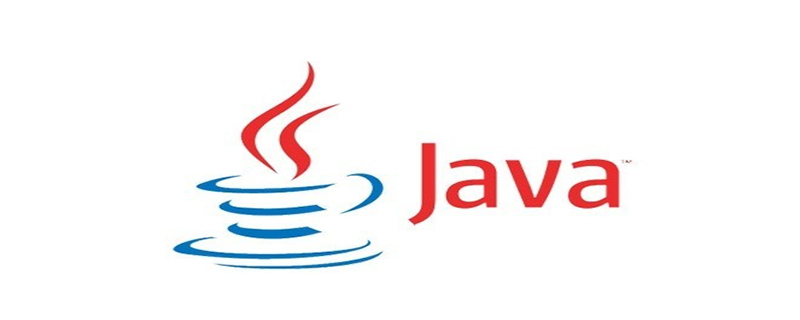This article brings you relevant knowledge about java, which mainly introduces related issues about java operators, including arithmetic operators, relational operators, logical operators, etc. ,I hope everyone has to help.

java tutorial"
1. Arithmetic operators| Meaning | |
|---|---|
| ##Sum | |
| Subtraction | ##* |
| / | |
| % | |
| – | |
increment by one before doing the assignment operation int x = 100;
int y = ++x;
步骤: ② ①
System.out.println(x); // 101
System.out.println(y); // 101
1.2 after the variable
do the assignment operation first, and then add 1 int m = 20;
int n = m++;
步骤: ① ②
System.out.println(n); // 20
System.out.println(m); // 21
1.3 Especially, in In print
int c = 90; System.out.println(c++); // 传,这个“传”在这里有一个隐形的赋值运算。90 // 把上面代码拆解开 //int temp = c++; //System.out.println(temp); int d = 80; System.out.println(++d); //81 // 拆解 //int temp2 = ++d; //System.out.println(temp2);2. --Operator (the example is the same as operator)2.1 --In front of the variable When – appears in the variable Before, you will
decrement yourself by one before doing the assignment operation2. --After the variable
will be done first, and then decremented by 1Note:
For operators: 1. It can appear before a variable or after a variable. 2. Regardless of whether it appears before or after the variable, in short, after the execution is completed, the value of the variable will definitely increase by 1.
2. Relational operators
| ##>= | greater than or equal to |
| ##< | Less than |
| <= | Less than or equal to |
| == | Equal to |
| != | is not equal to |
| ##Note |
Operator
| & | Logical AND (can be translated as AND) | |
|---|---|---|
| │ | Logical OR (can be translated into or) | If one side is true, the result is true |
| ! | Logical negation (inversion) | !true = false, !false = true |
| && | short circuit and | Both sides is true, the result is true |
| ││ | short circuit or | if one side is true, the result is true |
| 1. Short-circuit and && | 1.1 What is the difference between short-circuit and && and logical AND&? |
int x = 10; int y = 11; System.out.println(x > y & x > y++); //false // 通过这个测试得出:x > y++ 这个表达式执行了。 System.out.println(y); // 12 //测试短路与&& int m = 10; int n = 11; // 使用短路与&&的时候,当左边的表达式为false的时候,右边的表达式不执行 // 这种现象被称为短路。 System.out.println(m > n && m > n++); System.out.println(n); // 111.2 What is short circuit phenomenon?
The expression on the right is not executed. This phenomenon is called a short circuit phenomenon.
In terms of efficiency, && is more efficient than &.1.3 When to use && and when to use &?Because of the logical AND &, no matter what the result of the first expression is, the second expression will definitely be executed.
In future development, short-circuit and && and logical AND still need to coexist at the same time.
In most cases, it is recommended to use short-circuit AND &&. Only when both the expression on the left and the expression on the right need to be executed, the logical AND& will be selected. 2. Short circuit or ||is similar to short circuit
int x = 10; int y = 11; System.out.println(x < y | x > y++); //teur // 通过这个测试得出:x > y++ 这个表达式执行了。 System.out.println(y); // 12 //测试短路或|| int m = 10; int n = 11; // 使用短路或||的时候,当左边的表达式为true的时候,右边的表达式不执行 // 这种现象被称为短路。 System.out.println(m < n || m > n++); System.out.println(n); // 113. SummaryWhen using short-circuiting and &&, when the expression on the left is false
, the expression on the right is not executed.
- When using short-circuiting or ||, when the expression on the left is false
When the expression result istrue, the expression on the right side is not executed- : logical operator Both sides are required to be of Boolean type, and the final operation result is also of Boolean type.
## Note4. Assignment operator
OperatorMeaning
| = | |
|---|---|
| = | Add and so on (add/append this number to the original one) |
| -= | Subtraction equals (same reason) |
| *= | Multiplication equals (same reason) |
| /= | Division and equality (same principle) |
| %= | Module and equality (same principle) |
|
注:除了第一个是赋值运算符,其他都死拓展赋值运算符!! 很重要的语法机制:使用 int m = 10; m += 10; 类似于 m = m + 1;------->注意是类似!!!! 实际不同: i = i + 10; 和 i += 10;一样吗? byte i = 10; i += 10;----->没报错 其实 x += 1 等同于:x = (byte)(x + 1); i = i + 10;---->错误: 不兼容的类型: 从int转换到byte可能会有损失 编译器检测到x + 1是int类型,int类型不可以直接赋值给byte类型的变量x! 详见Java类型转换的时候需要遵循的规则第六点 i += 190; // i = (byte)(i + 190); System.out.println(i); // 44 (当然会自动损失精度了。) 五、条件运算符1.语法格式:(三目运算符。)布尔表达式 ? 表达式1 : 表达式2 2.执行原理是什么?布尔表达式的结果为 好玩点: char a = true ? '男' : "女"; string a1 = true ? '男' : "女"; 以上两个都报错。 //下面可以 String s = ""; s += true ? '男' : "女"; 六、字符串连接运算符(+)1.+ 运算符在java语言中有两个作用。
2.什么时候求和?什么时候进行字符串的拼接呢?
3.一定要记住:字符串拼接完之后的结果还是一个字符串。int a = 100; int b = 200; // 这里的 + 两边都是数字,所以加法运算 int c = a + b; System.out.println(a + "+" + b + " = " + a + b);//100+200=100200 System.out.println(a + "+" + b + " = " + (a + b));//100+200=300 注:遵循“ 推荐学习:《java详细教程》 |
The above is the detailed content of Explain Java operators in detail (summary sharing). For more information, please follow other related articles on the PHP Chinese website!